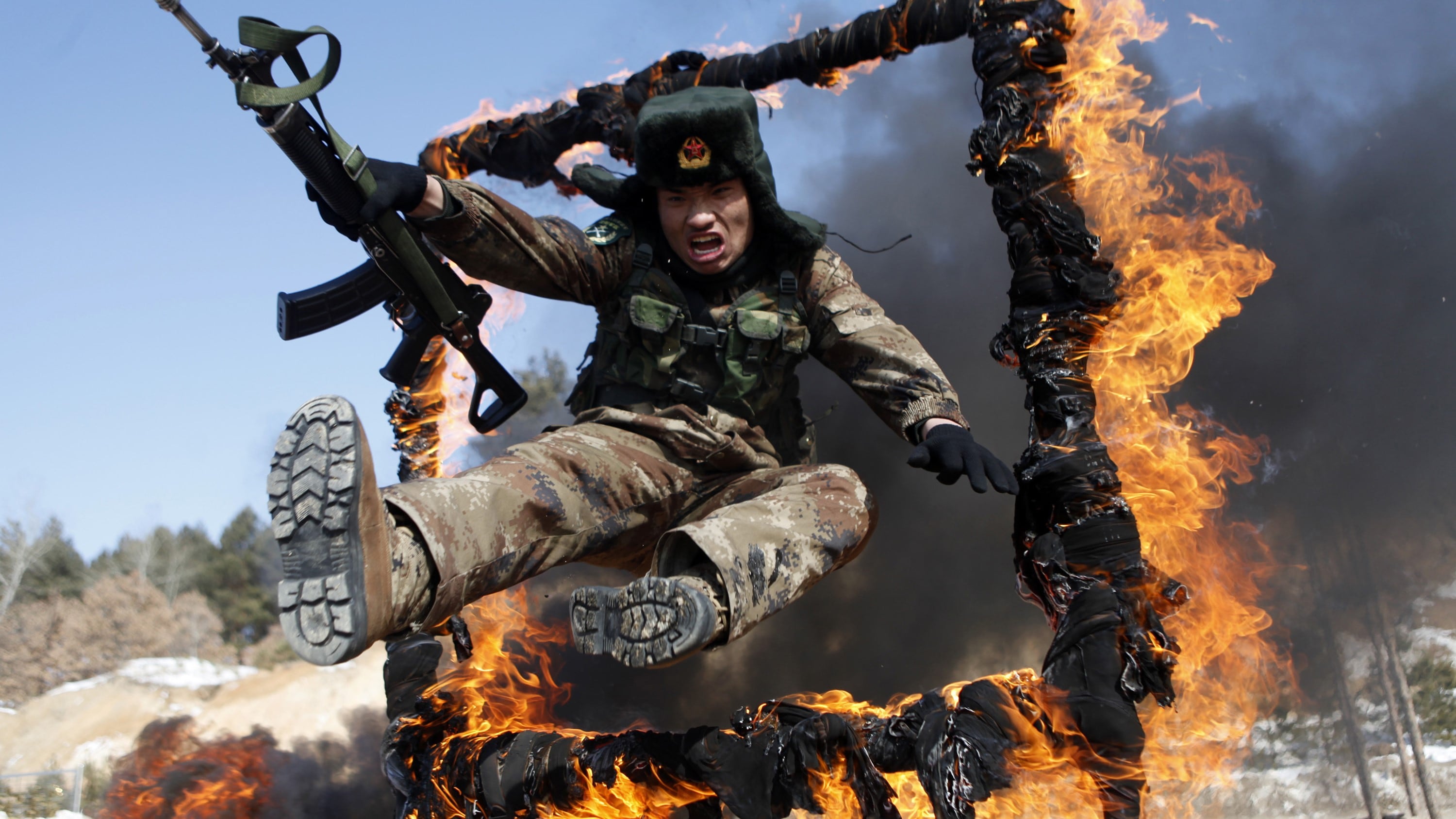WASHINGTON — The U.S. general who oversees America’s nuclear forces expressed concern Tuesday that Russia is developing new strategic weapons outside of the New START Treaty, which is set to expire in 2021.
The comments by Air Force Gen. John Hyten come in the wake of the United States’ and Russia’s withdrawal from the Intermediate-Range Nuclear Forces Treaty, freeing Moscow to develop and deploy new missiles, and fueling fears the 2010 New START Treaty may be next to lapse, with nothing to replace it.
In testimony to the Senate Armed Services Committee, the head of U.S. Strategic Command said Russia is developing a nuclear-armed, nuclear-powered underwater unmanned vehicle, an intercontinental-range cruise missile, and a hypersonic nuclear weapon, which Moscow wants to keep out of existing arms agreements.
Such weapons could pose a threat in the near future if the U.S. does not address them, Hyten warned.
“I get concerned 10 years and beyond that with torpedoes, with cruise missiles, with hypersonic, that it can go completely in the other direction, that we would have a difficulty,” Hyten said. “I have no problem saying I can defend the nation today, and I think the commander after me can, but I worry about the commander after the commander after the commander.”
Hyten said he wants to expand New START to include Russia’s capabilities and emphasized the value of the treaty’s verification process. The treaty allows the U.S. inspect and gain insight into the real capability of Russia’s strategic arsenal — and vice versa.
Yet, in an exchange with Massachusetts Democratic Sen. Elizabeth Warren — a 2020 presidential contender and proponent of nuclear restraint — Hyten seemed to leave an opening to justify New START’s termination.
“I’ve stated for the record in the part — and I haven’t changed my opinion — that I support New START, but you have to have a partner who wants to participate,” he said, likening it to the INF Treaty.
“If Russians continue to build capabilities outside the New START Treaty that aren’t accountable, under the table — under the treaty, if there is a new strategic arm that appears, they should take that to the table to discuss it,” he said. “If they won’t do that, that’s part of what we have concerns about.”

The INF Treaty prohibits the U.S. and Russia from fielding ground-launched ballistic and cruise missiles with ranges between 500 kilometers and 5,500 kilometers, but the U.S. asserts Russia’s new 9M729 cruise missile fits that category. The U.S. quit the treaty in October, and Russia has since followed suit.
On Sunday, Russian state television reportedly listed U.S. military facilities that Moscow would target in the event of a nuclear strike, and said that a hypersonic missile Russia is developing will be able to hit them in less than five minutes.
In questioning Hyten, Senate Armed Services Committee Chairman Jim Inhofe, R-Okla., and other Republican proponents of America’s nuclear arsenal, were clearly building a record ahead of a debate over the cost of nuclear modernization and America’s nuclear triad.
The issue is a likely friction point in the upcoming bicameral debate over the annual defense policy bill, as House Armed Services Committee Chairman Adam Smith, D-Wash., has called for a reset of the Trump administration’s plans for America’s nuclear arsenal.
Smith has called the Pentagon’s plan to recapitalize the three legs of the triad — by buying the Columbia-class submarine, new intercontinental ballistic missiles and the B-21 bomber — “way beyond what we can afford.”
In 2017, the Congressional Budget Office estimated the Pentagon will spend more than $1 trillion over the next 30 years to buy new nuclear weapons or sustain what it has.
Amid questions from Strategic Forces Subcommittee Chairman Deb Fischer, R-Neb., Hyten affirmed that while Russia and China modernize their nuclear triads, a unilateral cut by America “would significantly reduce our deterrent.”
RELATED

“I look at our nuclear capabilities, our triad and our modernization program as the minimal essential capabilities required to defend this nation,” Hyten said. “Because we have to defend against the most existential threat, and Russia and China — and their capabilities are the most existential threat. So to me, that’s the most minimum essential capabilities that we have to build. And even at the highest rate, it’ll still be roughly 6 percent of the overall defense budget. I think we can afford that security.”
Hyten also warned that Russia is improving its ability to attack anywhere in the globe with little or no notice through its pursuit of nuclear-armed hypersonic missiles and nuclear-capable cruise missiles, when coupled with the newest intercontinental-range ballistic missiles.
Hyten noted the U.S. can conduct its own research into hypersonic weapons without violating the INF Treaty, which covers ballistic missiles. He also repeated calls for a space-based sensor to defend against them. Existing U.S. sensors can detect and locate a ballistic or hypersonic missile at launch.
One difference is the hypersonic missile “disappears and we don’t see it until the effect is delivered,” Hyten said. With a ballistic missile, it would take 30 minutes to strike a target, but a with a hypersonic weapon, Hyten said, “it could be half of that.”
Joe Gould was the senior Pentagon reporter for Defense News, covering the intersection of national security policy, politics and the defense industry. He had previously served as Congress reporter.








